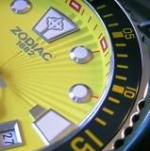
A place to enjoy watches and everything in between !
|
|
| | QNE Question for Our Pilots |  |
| | | Author | Message |
|---|
smellody
Consigliere

Posts : 2960
Join date : 2009-08-16
Age : 50
Location : West Salem, OR
 |  Subject: QNE Question for Our Pilots Subject: QNE Question for Our Pilots  Tue Dec 08, 2009 7:20 pm Tue Dec 08, 2009 7:20 pm | |
| So, with my new Hamilton Aviation QNE on its way, I though I better understand QNE.
Can someone explain it? Maybe one of the pilots on the site. I can only imagine that we will all benefit from the discussion.
Thanks! | |
|   | | merichar
Senior Associate

Posts : 2334
Join date : 2009-08-23
Location : Northern Oregon
 |  Subject: Re: QNE Question for Our Pilots Subject: Re: QNE Question for Our Pilots  Tue Dec 08, 2009 8:57 pm Tue Dec 08, 2009 8:57 pm | |
| Chris-I can't get a close enough picture of the dial to see exactly how it works. I believe the scale allows you to determine the air temperatures effect on your indicated altitude, thus giving you your true altitude. This could be important for flight planning purposes. I'll try and cover the very basics of a barometric altimeter. In order to determine altitude, you need to enter a reference pressure from a known altitude. For instance, a "standard" sea level pressure is considered 29.92 inches of mercury at a temperature of 15 degrees C (59F). This pressure converts to 1013.2 millibars or 14.7 psi. So say I want to go flying, I listen to the automated weather observation system (AWOS) or another source and take note of the local barometric pressure. I then dial that pressure into the Kollsman window on my altimeter (as an accuracy check, the altimeter should now read within 75ft of the known airfield altitude).
So now I take off and climb to 5000 feet indicated on the altimeter. The altimeter is using the pitot-static system on the aircraft to compare actual measured ram air pressure to the reference I entered and displaying that difference on the instrument. So this is all well and good but indicated altitude is not actual altitude if the atmosphere is warmer or colder than "standard".
If the atmosphere is warmer than standard, your actual altitude will be higher than your indicated altitude. A colder atmosphere means your actual altitude is lower than your instrument indicated altitude.
In a nutshell, your new QNE will allow you to make corrections for actual non-standard atmospheric conditions. When you get the watch if you show some extreme close ups we can probably figure out how to compute the correction factor.
BTW Chris, if you call 503 371-1062, you can hear the latest weather observations in Salem from the McNary Field ASOS.
Last edited by merichar on Tue Dec 08, 2009 11:11 pm; edited 1 time in total | |
|   | | smellody
Consigliere

Posts : 2960
Join date : 2009-08-16
Age : 50
Location : West Salem, OR
 |  Subject: Re: QNE Question for Our Pilots Subject: Re: QNE Question for Our Pilots  Tue Dec 08, 2009 9:03 pm Tue Dec 08, 2009 9:03 pm | |
| Great Mark! Thanks. Your explaination below actually makes sense. I'll take a close up of the dial when it arrives. Thanks again! - merichar wrote:
- Chris-I can't get a close enough picture of the dial to see exactly how it works. I believe the scale allows you to determine the air temperatures effect on your indicated altitude, thus giving you your true altitude. This could be important for flight planning purposes. I'll try and cover the very basics of a barometric altimeter. In order to determine altitude, you need to enter a reference pressure from a known altitude. For instance, a "standard" sea level pressure is considered 29.92 inches of mercury at a temperature of 15 degrees C (59F). This pressure converts to 1013.2 millibars or 14.7 psi. So say I want to go flying, I listen to the automated weather observation system (AWOS) or another source and take note of the local barometric pressure. I then dial that pressure into the Kollsman window on my altimeter (as an accuracy check, the altimeter should now read within 75ft of the known airfield altitude).
So now I take off and climb to 5000 feet indicated on the altimeter. The altimeter is using the pito-static system on the aircraft to compare actual measured ram air pressure to the reference I entered and displaying that difference on the instrument. So this is all well and good but indicated altitude is not actual altitude if the atmosphere is warmer or colder than "standard".
If the atmosphere is warmer than standard, your actual altitude will be higher than your indicated altitude. A colder atmosphere means your actual altitude is lower than your instrument indicated altitude.
In a nutshell, your new QNE will allow you to make corrections for actual non-standard atmospheric conditions. When you get the watch if you show some extreme close ups we can probably figure out how to compute the correction factor.
BTW Chris, if you call 503 371-1062, you can hear the latest weather observations in Salem from the McNary Field ASOS. | |
|   | | andrema
Senior Associate

Posts : 4263
Join date : 2009-07-08
Age : 113
Location : CT
 |  Subject: Re: QNE Question for Our Pilots Subject: Re: QNE Question for Our Pilots  Tue Dec 08, 2009 9:04 pm Tue Dec 08, 2009 9:04 pm | |
| - merichar wrote:
- Chris-I can't get a close enough picture of the dial to see exactly how it works. I believe the scale allows you to determine the air temperatures effect on your indicated altitude, thus giving you your true altitude. This could be important for flight planning purposes. I'll try and cover the very basics of a barometric altimeter. In order to determine altitude, you need to enter a reference pressure from a known altitude. For instance, a "standard" sea level pressure is considered 29.92 inches of mercury at a temperature of 15 degrees C (59F). This pressure converts to 1013.2 millibars or 14.7 psi. So say I want to go flying, I listen to the automated weather observation system (AWOS) or another source and take note of the local barometric pressure. I then dial that pressure into the Kollsman window on my altimeter (as an accuracy check, the altimeter should now read within 75ft of the known airfield altitude).
So now I take off and climb to 5000 feet indicated on the altimeter. The altimeter is using the pito-static system on the aircraft to compare actual measured ram air pressure to the reference I entered and displaying that difference on the instrument. So this is all well and good but indicated altitude is not actual altitude if the atmosphere is warmer or colder than "standard".
If the atmosphere is warmer than standard, your actual altitude will be higher than your indicated altitude. A colder atmosphere means your actual altitude is lower than your instrument indicated altitude.
In a nutshell, your new QNE will allow you to make corrections for actual non-standard atmospheric conditions. When you get the watch if you show some extreme close ups we can probably figure out how to compute the correction factor.
BTW Chris, if you call 503 371-1062, you can hear the latest weather observations in Salem from the McNary Field ASOS. WOW...I have a headache after reading that one...I read tax law and deal with numbers all day...that seems like a walk in the park compared to QNE!!
____________________________________
M A R K
| |
|   | | Anomaly
Senior Associate

Posts : 7125
Join date : 2009-11-13
Age : 60
Location : Tampa, Florida
 |  Subject: Re: QNE Question for Our Pilots Subject: Re: QNE Question for Our Pilots  Tue Dec 08, 2009 9:32 pm Tue Dec 08, 2009 9:32 pm | |
| And ALLLLLLLLLLLLLLLLLLLLLLLLLLLLLLLL this time I just thought I was reading it wrong...LOL! ____________________________________  | |
|   | | Sponsored content
 |  Subject: Re: QNE Question for Our Pilots Subject: Re: QNE Question for Our Pilots  | |
| |
|   | | | | QNE Question for Our Pilots |  |
|
Similar topics |  |
|
| | Permissions in this forum: | You cannot reply to topics in this forum
| |
| |
| |
|
